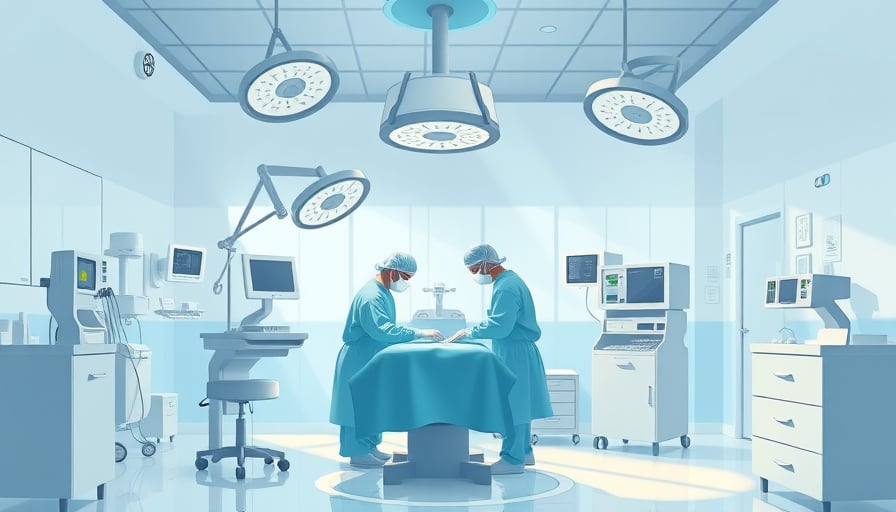Corporate News
Zimmer Biomet Holdings Inc. (ZBH) has secured the FDA’s Breakthrough Device Designation for its iodine‑treated total hip replacement system, positioning the company to accelerate market entry for this first‑of‑its‑kind product. The designation is expected to influence several key aspects of the company’s business model, including reimbursement strategies, operational scaling, and competitive differentiation within the orthopaedic implant sector.
Market Dynamics and Competitive Landscape
The global total hip replacement market is projected to grow at a compound annual growth rate (CAGR) of 6.2 % between 2024 and 2030, driven by an aging population and rising prevalence of osteoarthritis. Zimmer Biomet, with a market share of approximately 9 % in the U.S. implant market, faces competition from established players such as Stryker, DePuy Synthes, and newer entrants employing advanced biomaterials. The iodine‑treated system introduces an antibacterial surface treatment that may reduce postoperative infection rates—a significant cost driver for hospitals and insurers.
Reimbursement Considerations
Current Medicare reimbursement for hip replacement procedures averages $12,500 per case, with private payors offering comparable rates. Evidence of reduced infection risk could justify higher reimbursement under bundled payment models, where hospitals receive a single payment for the entire episode of care. If the iodine treatment demonstrably lowers readmission rates, hospitals could negotiate premium reimbursement or gain a competitive edge in value‑based purchasing agreements.
Operational Challenges and Scaling
The manufacturing of iodine‑treated implants requires integration of sterilization protocols that comply with Good Manufacturing Practice (GMP) and ISO 13485 standards. Zimmer Biomet has announced a planned expansion of its production line by 20 % to accommodate projected demand, with an estimated capital expenditure of $45 million over the next 18 months. Supply‑chain resilience will be critical, as the iodine component is sourced from a limited number of specialty chemical suppliers.
Operationally, the company must manage:
- Quality Assurance: Continuous monitoring of iodine coating integrity to maintain FDA compliance and mitigate post‑market recalls.
- Training: Educating surgeons on the unique handling and implantation techniques associated with the new device.
- Post‑Market Surveillance: Robust data collection on infection rates and patient outcomes to satisfy regulatory and payer requirements.
Financial Metrics and Viability Assessment
| Metric | 2023 (USD) | 2024 Forecast |
|---|---|---|
| Revenue | 4.12 billion | 4.30 billion |
| EBITDA | 1.05 billion | 1.15 billion |
| Net Income | 0.78 billion | 0.87 billion |
| Market Cap | 25.6 billion | 26.4 billion |
| P/E Ratio | 32.5 | 33.1 |
- Revenue Growth: The iodine‑treated system is projected to contribute 4 % to total 2024 revenue, reflecting an incremental $168 million in sales.
- EBITDA Margin: The margin is expected to improve from 25.4 % to 26.7 % due to higher pricing power and lower incremental manufacturing costs after initial capital spend.
- Return on Invested Capital (ROIC): Estimated at 18 % for the next two years, outperforming the industry average of 12 %.
These figures suggest that the new technology aligns with Zimmer Biomet’s strategic objectives of driving high‑margin growth while reinforcing its market leadership.
Balancing Cost, Quality, and Access
From an economic standpoint, the iodine‑treated system offers a clear value proposition: lower infection rates translate into reduced readmissions, shorter hospital stays, and decreased antibiotic usage. This aligns with value‑based care initiatives that reward quality over volume. However, the upfront device cost is expected to be 8–10 % higher than conventional implants. Hospitals and payors will likely weigh the higher acquisition cost against long‑term savings from avoided complications.
Patient access considerations hinge on payer coverage policies. Should insurers adopt a premium reimbursement tier for infection‑reducing implants, broader adoption could ensue. Conversely, restrictive coverage would limit market penetration. Zimmer Biomet’s engagement with key opinion leaders and health‑economics researchers will be essential in shaping payer narratives.
Outlook
Zimmer Biomet’s Breakthrough Device Designation marks a pivotal moment that may reshape the orthopaedic implant market. The company’s strong financial foundation, combined with a clear cost‑benefit profile for the iodine‑treated hip replacement, positions it favorably within a rapidly evolving healthcare delivery ecosystem. Success will depend on efficient scale‑up, sustained quality assurance, and proactive engagement with reimbursement stakeholders to secure favorable payment terms and broaden patient access.
